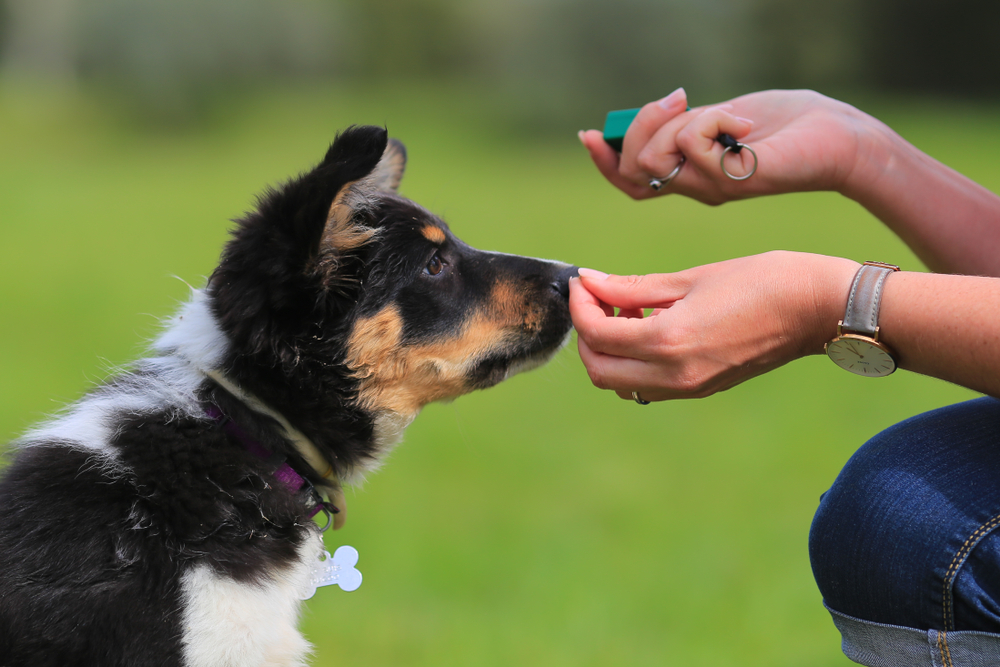
A Guide to Puppy Training
August 15, 2024 8:26 pm Leave your thoughtsTraining a puppy is one of the most rewarding experiences for any new dog owner. It not only helps your furry friend develop into a well-behaved companion but also strengthens the bond between you and your pet. However, knowing when and how to start training can be a bit confusing. This guide will answer common questions like, “when should I start training my puppy?” and provide tips on “how to start training” to ensure your puppy grows into a well-mannered dog.
When Should I Start Training My Puppy?
The ideal time to start training your puppy is as early as possible. Puppies are incredibly receptive to learning during their first few months of life. Most experts agree that training can begin as early as 8 weeks old. At this stage, puppies are like sponges, soaking up new information and behaviors. Early training can help set the foundation for good habits and prevent future behavioral issues.
The Importance of Early Socialization
One critical aspect of early puppy training is socialization. Introducing your puppy to various people, animals, and environments helps them develop confidence and adaptability. Socialization should start as soon as your puppy is settled into their new home. Positive experiences with different stimuli will make your puppy more comfortable and less fearful as they grow older.
How to Start Training
Starting your puppy’s training journey involves several key steps. Consistency, patience, and positive reinforcement are essential to effective training. Here’s a comprehensive guide on how to start training your puppy:
1. Establish a Routine
Puppies thrive on routine. Establish a regular schedule for feeding, bathroom breaks, and training sessions. This helps your puppy understand what to expect and creates a sense of security. Training sessions should be short and frequent—about 5 to 10 minutes per session is ideal. As your puppy grows and their attention span increases, you can gradually extend the duration of these sessions.
2. Use Positive Reinforcement
Positive reinforcement is a powerful training tool. Reward your puppy with treats, praise, or playtime whenever they exhibit desired behaviors. This encourages them to repeat those behaviors. Avoid punishment-based training methods, as they can lead to fear and anxiety. Instead, focus on rewarding good behavior to foster a positive learning environment.
3. Teach Basic Commands
Start with basic commands such as “sit,” “stay,” “come,” and “down.” These foundational commands are not only practical but also help build a strong communication channel between you and your puppy. Use clear, consistent commands and reward your puppy immediately when they respond correctly. Repetition and patience are key to reinforcing these commands.
4. Address Common Behavioral Issues
Puppies often exhibit common behavioral issues like chewing, biting, or jumping. Address these issues promptly to prevent them from becoming ingrained habits. Provide appropriate chew toys and redirect your puppy’s attention when they start chewing on household items. If your puppy is jumping, teach them to sit before greeting people to encourage more polite behavior.
5. Socialization and Exposure
Socialization is crucial for a well-adjusted puppy. Introduce your puppy to a variety of people, animals, and environments in a controlled and positive manner. This helps them become accustomed to different experiences and reduces the likelihood of fear-based reactions. Consider enrolling your puppy in a puppy socialization class where they can interact with other dogs and learn basic obedience skills.
6. Consistency is Key
Consistency in training is essential for success. Ensure that all family members are on the same page regarding training commands and rules. Mixed signals can confuse your puppy and hinder their progress. Consistent training helps your puppy understand what is expected of them and reinforces desired behaviors more effectively.
7. Be Patient and Persistent
Training a puppy requires patience and persistence. Puppies are still learning about their world and may not grasp commands immediately. Celebrate small victories and keep training sessions positive. If your puppy struggles with a particular command or behavior, break it down into smaller steps and practice regularly. Patience will pay off as your puppy grows and learns.
8. Seek Professional Help if Needed
If you encounter persistent behavioral issues or feel overwhelmed, don’t hesitate to seek help from a professional dog trainer. A certified trainer can provide personalized guidance and address specific challenges you may be facing. They can also offer valuable insights and techniques to enhance your training approach.
Conclusion
Training a puppy is a journey that requires time, effort, and dedication. Starting early, using positive reinforcement, and maintaining consistency are crucial components of successful training. By understanding when to start training and how to approach it, you’ll set your puppy on the path to becoming a well-behaved and happy adult dog. Remember, the bond you build through training will last a lifetime, making every moment of the process worth it.
Need Pet Grooming in Henderson, NV?
Hello from The Soggy Dog! Established in 2006, The Soggy Dog welcomes any and all pets. We offer a self-wash service for your furry friends of any size and breed for a great bonding experience. We also have a selection of pet supplies, from doggie treats to supplements for your cats. At The Soggy Dog, we provide a comfortable environment to bathe and groom your pets in the safest hands there are: yours! Contact us today, and make sure you look into our coupons online!
Categorised in: Pet Tips
This post was written by admin
